 W
WJuan Nepomuceno Almonte was a 19th-century Mexican official, soldier and diplomat, the natural son of Fr. José María Morelos. He was a veteran of the Battle of the Alamo during the Texas Revolution. Almonte was also a leader of Mexico's Conservatives in the 1860s and served as regent after the Second Mexican Empire was established by Napoleon III of France.
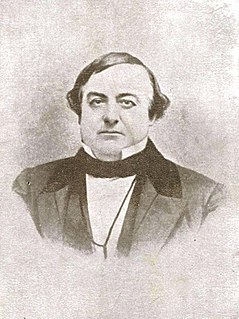 W
WJuan Bautista Valentín Alvarado y Vallejo was a Californio politician that served as Governor of Alta California from 1837-42. Prior to his term as governor, Alvarado briefly led an movement for independence of Alta California from 1836-37, in which he successfully deposed interim governor Nicolás Gutiérrez, declared independence, and created a new flag and constitution, before negotiating an agreement with the Mexican government resulting in his recognition as governor and the end of the independence movement.
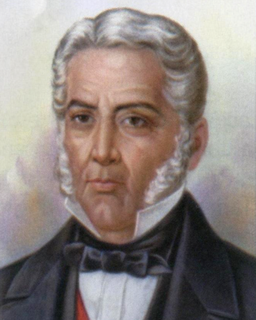 W
WJuan Nepomuceno Álvarez Hurtado de Luna, generally known as Juan Álvarez, was a general, long-time caudillo in southern Mexico, and interim president of Mexico for two months in 1855, following the liberals ouster of Antonio López de Santa Anna. Álvarez had risen to power in the Tierra Caliente, in southern Mexico with the support of indigenous peasants whose lands he protected. He fought along with heroes of the insurgency, José María Morelos and Vicente Guerrero in the War of Independence, and went on to fight in all the major wars of his day, from the "Pastry War", to the Mexican–American War, and the War of the Reform to the war against the French Intervention. A liberal reformer, a republican and a federalist, he was the leader of a revolution in support of the Plan de Ayutla in 1854, which led to the deposition of Santa Anna from power and the beginning of the political era in Mexico's history known as the Liberal Reform. According to historian Peter Guardino: "Álvarez was most important as a champion of the incorporation of Mexico's peasant masses into the polity of [Mexico] ... advocating universal male suffrage and municipal autonomy."
 W
WPedro Nolasco Martín José María de la Candelaria Francisco Javier Ampudia y Grimarest was born in Havana, Cuba, and served Mexico as a Northern army officer for most of his life. At various points he was the governor of Tabasco, Yucatán, and Nuevo León. He also served a short term as Secretary of National Defense under President Benito Juárez.
 W
WPedro Bernardino María de Anaya y Álvarez was a military officer who served twice as interim president of Mexico from 1847 to 1848. He also played an important role during the Mexican–American War.
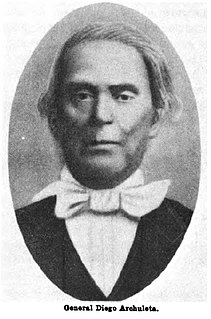 W
WBrigadier General Diego Archuleta, was a member of the Mexican Congress. He joined the Mexican Army to fight against the United States in the Mexican–American War. Later, he was appointed an Indian Agent by President Abraham Lincoln, and joined the Union Army during the American Civil War. Archuleta became the first Hispanic to reach the military rank of Brigadier General.
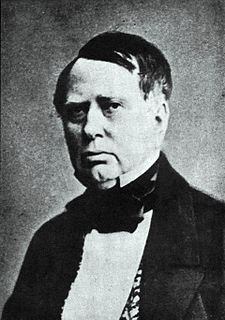 W
WJosé Mariano Martín Buenaventura Ignacio Nepomuceno García de Arista Nuez was a noted veteran of many of Mexico's nineteenth-century wars. He served as president of Mexico from 15 January 1851 to 6 January 1853. He was the first president of Mexico to be born in the 19th century.
 W
WManuel Armijo was a New Mexican soldier and statesman who served three times as governor of New Mexico. He was instrumental in putting down the Revolt of 1837, he led the force that captured the Texan Santa Fe Expedition, and he later surrendered to the United States in the Mexican–American War, leading to the Capture of Santa Fe.
 W
WNicolás Bravo Rueda was the 11th President of Mexico and a soldier. He distinguished himself in both roles during the 1846–1848 U.S. invasion of Mexico.
 W
WJosé Valentín Raimundo Canalizo Bocadillo, known as Valentín Canalizo, was a Mexican President, state governor, city mayor, army general, defense minister and conservative politician. He is as yet the only Mexican President from the city of Monterrey. He was a supporter of a centralist national government, and a confidante of President of Mexico General Antonio López de Santa Anna. Canalizo was President of Mexico two times, for a total of about one year in 1843 and 1844, during the complex Mexican historical times after the one decade-long Mexican War of Independence and before the Mexican–American War. Valentín Canalizo had previously been the Mayor of Mexico City, after being Governor of Puebla state, and years before, Mayor of the city of Cuernavaca.
 W
WJosé María Jesús Carbajal (1809–1874) was a Tejano who was rejected by the Anglos after the Battle of San Jacinto and had to leave Texas. He then became a Mexican revolutionary, who opposed the Centralist government installed by Antonio López de Santa Anna. Carbajal was a direct descendant of Andres Hernandez and Juana de Hoyos (1709-?) (m.1729) of the settling Spanish soldier's founders of Villa de Bejar in 1718 and Canary Islands settlers who immigrated to San Antonio, Texas in the 18th Century. As a teenager in San Antonio, he was mentored by Stephen F. Austin and came under the spiritual guidance of Alexander Campbell while attending school in Virginia. He was a surveyor by trade and a politician as a result of historical events. Carbajal married into the influential De Leon family of Victoria, Texas. He called himself "a true Mexican" whose allegiance lay with the people of Mexico. He turned his back on the Republic of Texas after his land and that of many other Tejanos were confiscated by the liberal Rebels. He moved to Mexico, where he conducted guerrilla warfare against Mexican military forces. Carbajal was active in the establishment of the Republic of the Rio Grande and made an unsuccessful attempt at establishing the break-away Republic of Sierra Madre. Indicted twice in the United States for his activities, Carbajal was never convicted in a court of law. He was an early supporter of Benito Juárez and was appointed the military governor of Tamaulipas.
 W
WCaptain José Antonio Ezequiel Carrillo (1796–1862) was a Californio rancher, officer, and politician in the early years of Mexican Alta California and U.S. California.
 W
WJosé Antonio Castro was a Californio politician, statesman, and military leader who served as acting governor of Alta California in 1835, and military commander under governor Juan Bautista Alvarado after November, 1836. He was also Commandante General in northern California during the Bear Flag Revolt.
 W
WAntonio Francisco Coronel was a Californio of Mexican Alta California, that transitioned into various political offices after U.S. statehood of California in 1850. He served as the fourth mayor of Los Angeles from 1853 to 1854.
 W
WMartín Perfecto de Cos was a Mexican Army general and politician during the mid-19th century. Born in Veracruz, the son of an attorney, he became an army cadet at the age of 20, a lieutenant in 1821, and a brigadier general in 1833.
 W
WVicente Filisola was a Spanish military figure, Mexican military and political figure in the 19th century.
 W
WGeneral José María Flores was an officer in the Mexican Army and was a member of la otra banda. He was appointed Governor and Comandante General pro tem of Alta California from 1846 to 1847, and defended California against the Americans during the Mexican–American War.
 W
WJoaquín García Icazbalceta was a Mexican philologist and historian. He edited writings by Mexican writers who preceded him, wrote a biography of Juan de Zumárraga, and translated William H. Prescott's Conquest of Mexico. His works on Colonial Mexico continue to be cited today.
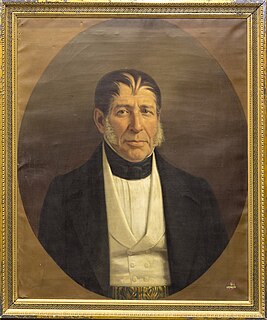 W
WJosé Joaquín Antonio de Herrera was a moderate Mexican politician who served as president of Mexico three times, and as a general in the Mexican Army during the Mexican–American War of 1846-1848.
 W
WPedro Hinojosa de la Garza Falcón was a Mexican politician and military general who fought in the Mexican–American War, the Reform War, and in the French intervention in Mexico. In addition, Hinojosa was governor of Durango, Nuevo Leon, and Chihuahua, and served as Secretary of War and Navy.
 W
WManuel José María Ignacio Lombardini de la Torre was a Mexican general and politician who supported Antonio López de Santa Anna. From 8 February 1853 to 20 April 1853, he served as president of Mexico.
 W
WJosé María Mata Reyes was a 19th-century liberal politician and diplomat from Mexico who served for two months as minister of Finance in the cabinet of Benito Juárez (1860–1861), three months as minister of Foreign Affairs in the cabinet of Porfirio Díaz (1878), as envoy extraordinary and minister plenipotentiary of Mexico to the United States (1859–1860), as congressman in the Chamber of Deputies, and as municipal president of Martínez de la Torre, Veracruz.
 W
WJosé Tomás de la Luz Mejía Camacho, better known as Tomás Mejía, was a Mexican soldier. He was of Otomi indigenous origin and came from a humble background, studying in the local rural school. He was a loyal Catholic siding with the conservatives during the Reform war and later the Second French Intervention.
 W
WMariano Paredes y Arrillaga was a Conservative Mexican general and president. He took power via a coup d'état in 1846. He was the president at the start of the Mexican–American War, and was himself overthrown on 28 July 1846. "Strongly proclerical, he believed that a liberal democracy and federal structure were inappropriate for Mexico in its then state of development, and that the country could be governed only by the army in alliance with the educated and affluent elite."
 W
WJosé Manuel de la Peña y Peña was a Mexican politician and lawyer, interim president of Mexico from 26 September 1847 to 13 November 1847 and president from 8 January 1848 to 3 June 1848.
 W
WAndrés Pico was a Californio who became a successful rancher, fought in the contested Battle of San Pascual during the Mexican–American War, and negotiated promises of post-war protections for Californios in the 1847 Treaty of Cahuenga. After California became one of the United States, Pico was elected to the state Assembly and Senate. He was appointed as the commanding brigadier general of the state militia during the U.S. Civil War.
 W
WJohn Patrick Riley was an Irish soldier in the British Army who emigrated to the United States and subsequently enlisted in the United States Army. During the Mexican–American War of 1846–1848, Riley led a number of other Irish Catholics in the ranks who defected to Mexico, where they formed the Saint Patrick's Battalion in the Mexican Army.
 W
WJosé Mariano de Salas was a Mexican general and politician who served twice as interim president of Mexico. He was also a member of the executive triumvirate of the Second Mexican Empire that invited Maximilian of Habsburg to take the throne.
 W
WAntonio de Padua María Severino López de Santa Anna y Pérez de Lebrón, usually known as Santa Anna or López de Santa Anna, was a Mexican politician and general. His influence on post-independence Mexican politics and government in the first half of the nineteenth century is such that historians often refer to it as the "Age of Santa Anna." He was called "the Man of Destiny" who "loomed over his time like a melodramatic colossus, the uncrowned monarch." Santa Anna's military and political career was a series of reversals. He first opposed Mexican independence from Spain, but then fought in support of it. He backed the monarchy of Mexican Empire, then revolted against the emperor. He "represents the stereotypical caudillo in Mexican history". Lucas Alamán writes that "the history of Mexico since 1822 might accurately be called the history of Santa Anna's revolutions. His name plays a major role in all the political events of the country and its destiny has become intertwined with his."
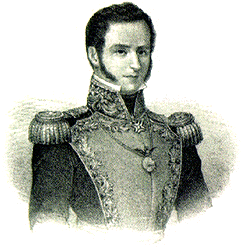 W
WJosé María de Tornel y Mendívil (1795–1853) was a 19th-century Mexican army general and politician who greatly influenced the career of President Antonio López de Santa Anna.
 W
WJosé Cosme de Urrea y Elías González or simply José de Urrea was a Mexican general. He fought under General Antonio López de Santa Anna during the Texas Revolution. Urrea's forces were never defeated in battle during the Texas Revolution. His most notable success was that of the Goliad Campaign, in which James Fannin's 400 soldiers were surrounded and induced to capitulate under terms, but were massacred in Urrea's absence on the orders of Santa Anna. Urrea also fought in the Mexican–American War.
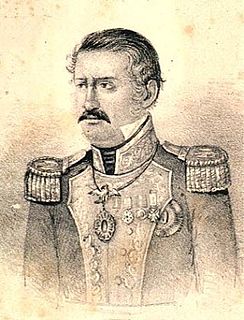 W
WGabriel Valencia (1799–1848) was a Mexican soldier in the early years of the Republic. From December 30, 1845 to January 2, 1846 he served as interim president of Mexico. He was the President of the Chamber of Deputies in 1843.
 W
WAgustín Vicente Zamorano (1798–1842), was a printer, soldier, and provisional Comandante General in the north of Alta California.